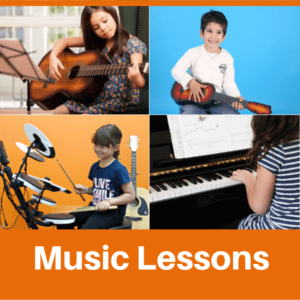
All teachers and parents have done an amazing job adapting to virtual learning over the past few months. It is definitely a challenge to quickly adjust to remote forms of teaching and everything teachers and parents have done to support their students is amazing.
As online learning continues, it can be difficult to continue to keep students engaged during virtual lessons and at home as a parent. With the weather getting warmer, it can also be difficult to continue physical distancing as we are reminded of fun times exploring the outdoors. Virtual field trips are a great way to add excitement to the classroom and engage students’ curiousity. The geography-related field trips below will allow you and your students to start exploring the world from home! These are great activities for families as well, as they can be tailored to students of all ages.
AirPano
With AirPano, you can explore countries around the world through 360 videos and photos. From the Acropolis in Ancient Greece to the Great Wall of China, there are endless possibilities. Many of the photos and videos are accompanied by cultural music and written information which can lead to even further engagement and learning.
There are also many great online activities to extend student learning during your trips. For example, you could read a book about mythical creatures in Greece before your visit or pair a trip to a cave in Indonesia with a lesson about underwater ecosystems. The 360 videos and photos from AirPano can therefore be adapted to all ages.
Iqaluit Trip on Google Maps
This virtual experience of the Canadian Arctic is a great way to introduce Indigenous education in the classroom. Students can view videos and experience street view across Iqaluit, in addition to learning about how the maps were created in collaboration with elders and locals. Headings are also given in Inuktitut, which could introduce learning and conversation about Indigenous languages and the importance of preserving these languages.
WildEarth
With WildEarth, you can go on a real safari from the comfort of your home! This organization has live safaris twice a day which are filmed by expert guides from a variety of safari lodges in Greater Kruger National Park (South Africa) and Maasai Mara (Kenya). Students can learn about landscapes and vegetation as well as see amazing animals everyday. All live safaris are posted on Youtube so there are endless options to view. The first 45 minutes of each safari are dedicated to questions from kids, so if you are watching live students can send in their questions and have them directly answered by safari guides.
Finnish Forest
This beautiful, immersive virtual forest experience will make you feel like you are truly outdoors. Students can listen to the birds and other forest sounds in addition to learning about specific types of plants. This field trip may be better suited to older students who will be interested in learning about specific plants and biodiversity; however, younger students may also be captivated by the unique forest sounds. The tour is divided into four sections (Source of life, Growth for tomorrow, Adapting to global trends, Never ending circle) so the experience could also be divided into separate, shorter lessons. This is an excellent virtual experience to connect to learning about climate change and the environment.
National Marine Sanctuaries: Virtual Dives
These 360 videos offer a beautiful snapshot of deep sea diving destinations across the world. From seeing sea lions to saying hi to turtles in Hawaii, students will love swimming virtually beside aquatic animals and learning more about underwater habitats. This is also an amazing opportunity to connect to learning about climate change in relation to coral reefs specifically as there is a 360 video about coral restoration.
Each 360 video is around 4 minutes so you can easily visit many settings at once, or turn this field trip into a longer journey by using additional online resources to enrich learning. The great thing about the virtual dives is that they can be geared towards any age level. Younger students will love looking at and counting the colourful fish, while older students can connect their observations to additional science and geography topics. The National Marine Sanctuaries website also has pre-made lesson plans with educational activities related to each virtual dive that you can adapt for your students.
This list captures just a few of the amazing around the world virtual experiences available. The great thing about virtual field trips is that they can spark curiosity and questions from students which can lead to further ideas for at-home learning. Have fun exploring these places from home!
For more virtual field trips and Oak Learners fun check us out on Instagram
For more fun Field Trip ideas find us on Pinterest too.
Looking for more fun Virtual Field Trips check out our Virtual Field Trips Archive
Or, sign up for our newsletter below for school updates.
Get updates on new classes, hosted events, and more.










